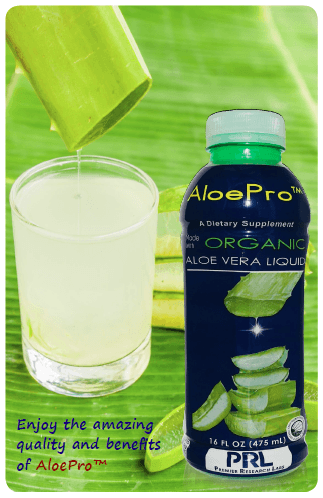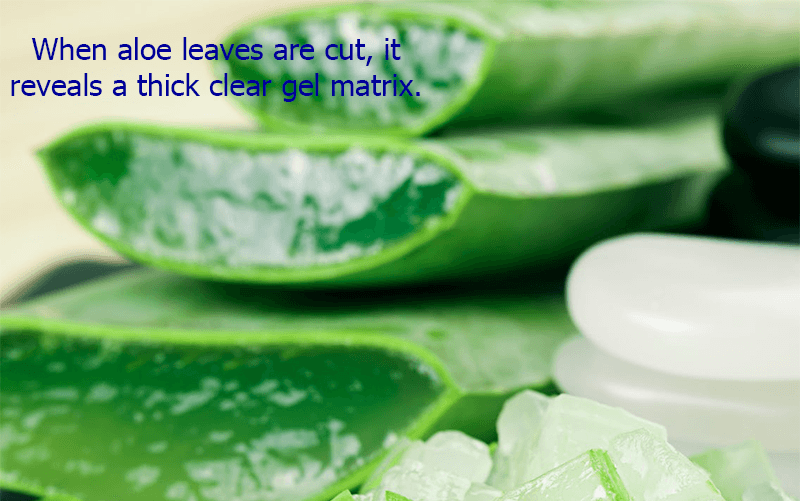WHY CHOOSE Aloe-100™?
In the marketplace, Aloe vera is available in many forms such as liquids, powders and freeze-dried. Unfortunately, even freeze-drying can break the delicate glycoside bonds of the aloe, which can hinder its potency.

OUR QUANTUM SOURCE OF ALOE
The source of Aloe vera used in Aloe-100™ is grown in the pristine countryside in Central America, miles from any city or heavy traffic. When the aloe is harvested, the outer leaves of the plant are hand-picked so only fully mature leaves are selected, which contain the full spectrum of beneficial phytonutrients. The aloe plant is not uprooted and killed. Younger aloe plants are not used since they cannot yield the same fully developed botanical complexes as mature aloe plants.
GENUINE QUALITY ALOE - WHERE TRUST IS EARNED
We take our aloe seriously at QNL! When a fresh lot of aloe arrives at our plant, our scientists use Proton Nuclear Magnetic Resonance Spectroscopy (H NMR) to perform an entire panel of laboratory tests on this raw material to make sure that it meets and even exceeds the FDA’s requirements. Why so much testing? We believe that ultra- benefits of aloe are ONLY possible from ultra-quality aloe.
Unfortunately, numerous quality control issues are associated with Aloe vera products in the marketplace, including failure to differentiate between closely related species, the use of inappropriate raw aloe materials, improper processing of the leaves, unwanted phenolic compound residues, insufficient preservation of the aloe’s active constituents during processing and storage, and failure to avoid adulterants in the final product.

In contrast, Aloe-100™ features ONLY genuine inner leaf aloe, which is organic and which has been hand-filleted – without adulterants. At QNL, before the preparation of our aloe begins, we first authenticate the botanical identity of the aloe; this helps to exclude any batches of aloe that may have been adulterated with the wrong species or other look-alike herbs. Sadly, without this important step, the wrong species of aloe can be misidentified and mislabeled, and sold commercially as Aloe vera.
Next, our QNL staff completes an in-depth phyto-forensic screening where we inspect for undesirable inorganic materials and adulterants, such as herbicides and pesticides.
QNL quality guarantee
Our QNL quality guarantee ensures that our aloe meets FDA requirements for identity, purity, strength, and composition. We also test for a whole range of contaminates, such as heavy metals (including arsenic, mercury, cadmium and lead), residual solvents in extracts, and pathogenic microbiology. The raw materials in Aloe-100™ have not been solvent extracted or heat damaged.

ACE YOUR LIFE WITH ACEMANNAN!
Our product, Aloe-100™, contains naturally occurring, active acemannan, a highly beneficial, naturally occurring polysaccharide. Monosaccharides, oligosaccharides and polysaccharides play a critical role in many aspects of human nutrition and health. The polysaccharides found in the Aloe vera inner leaf are characteristic components of the aloe plant and thus, can be used for identification of the authenticity and quality of the products derived from the Aloe vera plant. The mannose-rich polysaccharide, acemannan, is predominately found in the inner leaf gel of aloe vera and is considered to be one of the most important compounds for nutrition and health.
Acemannan has been identified as the main active ingredient in the inner leaf gel. It is composed of mannose, glucose and galactose in a 31:1:1 ratio. These are counted among the eight important, essential monosaccharides critical to human health.
Acemannan and other polysaccharides have been extensively researched and are considered to be some of the most biologically active and beneficial components in Aloe vera. Currently, the only validated method for analysis of polysaccharide content is proton nuclear magnetic resonance spectrometry (H NMR). This method examines biomarkers of undesirable degradation by-products of polysaccharides (such as acetic, succinic and fumaric acids). When these acids are present, it signifies the aloe has been compromised. In addition, if aloe is exposed to excessive or prolonged heat, this H NMR test identifies whether formic acid is present - also a highly undesirable compound that forms during thermal degradation of critical polysaccharides such as glucose.
By using H NMR, QNL scientists routinely examine the polysaccharide composition and also authenticate Aloe-100™ for its naturally occurring highly beneficial acemannan content as well as glucose, malic acid and other key components. With confidence, we state that Aloe-100™ contains a significant amount of naturally occurring acemannan with NO ADDED maltodextrin to artificially enhance the polysaccharide content.




